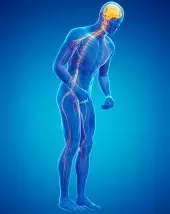Signs of Parkinson’s disease may occur three years before diagnosis
By Dr Michael Doris MB BS
Prodromal features of Parkinson’s disease can be detected as early as three years before diagnosis, according to US researchers.
In their case-control study, published in JAMA Neurology, the researchers examined data from the US National Health and Aging Trends (NHATS) longitudinal study to evaluate functional limitations in the years preceding a diagnosis of Parkinson’s disease. They analysed responses to the annual NHATS survey on features of parkinsonism in the year of diagnosis (baseline) and up to three years prior.
Fifty-six cases of Medicare beneficiaries aged 65 years or over with newly diagnosed Parkinson’s disease were identified from 6674 participants. Codes for drug-induced, vascular or atypical parkinsonian disorders were excluded. Survey responses from case participants were compared with those from control participants, defined as Medicare-eligible individuals with no Parkinson’s disease diagnosis at baseline or two or more years prior.
In the three years beforehand, participants diagnosed with Parkinson’s disease were less likely than controls to report being able to walk six blocks, stand independently from kneeling, lift a heavy object overhead or maintain balance. Two and one years before diagnosis, they were more likely than controls to report speech difficulties, mood changes and worsening pain, as well as impairments in motor function and mobility.
The researchers noted several study limitations, including uncertainty on whether participants could be distinguished as being in a prodromal state versus having undiagnosed Parkinson’s disease. Additionally, they acknowledged the limitations inherent with sample selection based on diagnostic and billing coding.
Professor Simon Lewis, Professor of Cognitive Neuroscience at The University of Sydney and Director of the Parkinson’s Disease Research Clinic at the Brain and Mind Centre, Sydney, said the study should highlight the need for primary care workers to look a little closer at patients presenting with otherwise nebulous complaints that might be ascribed to ageing.
‘Changes in motor function should prompt a screen for physical signs of Parkinson’s and other prodromal features,’ Professor Lewis said. ‘Any suspicion of early Parkinson’s disease should prompt a screen,’ he urged, including taking a history of rapid eye movement disorder (acting out dreams with physical actions), cognitive decline, hyposmia, constipation and anxiety.
Professor Lewis told Medicine Today that Australia was about to lead the first trial in treating prodromal Parkinson’s disease. ‘Any neuroprotective strategy is likely to be most effective when delivered at the earliest time,’ he added.


